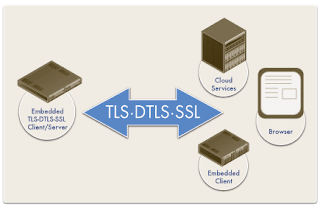Throw away your firewalls!!
I
usually install firewall appliances with
UTM (Unified Threat Management) features to protect the network
and the information of our customer against
virus, malicious websites, spam, attacks, etc. Most
of these firewalls are installed in the
perimeter of the network and most of them
have VPN
capabilities as
well. Therefore, SSL VPN or IPSec VPN are used to connect to
the organization from untrusted networks like coffee shops, airports,
hotel, etc. Actually, this is a good way to give to remote users
access to internal services.
However,
Google wants to break the schemas, architecture and design that we
are used to seeing with a new concept called BeyondCorp.
They are working with a new approach to
enterprise security where everything is untrusted, also called Zero
Trust, and where
access control are shifted from the perimeter to individual devices
and users allowing employees to work
securely from any location without the need for a traditional VPN. As
a result, employees don’t have to install any VPN client, which
is a great benefit,
and internal services are no longer internal services but they are
accessible from any location, even from
Internet.
 |
| BeyondCorp components and access flow |
As
we can see, this new approach has many components. As
it trusts in individual devices and users instead of networks, there
are two important databases, device
inventory database and user/group database,
where trustworthy users
and devices are stored. However, the trust
of a user or device can change over the time, for
example if the device doesn’t have
applied the last OS patch, the device
doesn’t have the last antivirus
signatures or
the certificate is in the blacklist, that
device is not trustworthy and it’s moved
to untrusted network. All of these tasks are
done by the trust inference component,
the certificate issuer and the pipeline.
On the other hand, the access
control engine along with the access
proxy provides service-level
authorization to enterprise applications on a per-request basis. This
new security model also has a Radius
component to move users and devices from one VLAN to another inside
Google buildings, and a Single Sign-On
component for user authentication to
all applications.
This
new security approach of protecting our corporate security perimeter
without firewalls has to publish all our internal services to
Internet. As we can see, Google has resources like
codereview.corp.google.com
domain name registered in public DNS with a CNAME pointing to the
access proxy:
 |
| DNS Intranet resources |
Moma
is the Intranet of Google employees and lots of resources are
accessible from Internet through the access proxy with BeyondCorp:
 |
| MOMA Single Sign-On |
From my point of view, firewalls aren’t going to disappear yet but we’ll go to the 4th generation of firewalls where we’ll configure firewall policies by users and devices easily instead of networks because any location and network will be untrusted. In addition, we’ll have better integration between all IT devices (servers, desktops, BBDD, WiFi, switches, mail, web, firewall, etc) for better security protection such as Fortinet is doing with his Fortinet Security Fabric.
Regards
my friends and
remember, the world is changing very fast
and the IT security as well.









Commentaires
Enregistrer un commentaire